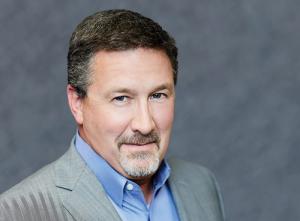CTC Global
J.D. Sitton is the CEO at CTC Global. J.D. has led start-up and growth-stage companies in the energy technologies and services, health care, and industrial controls industries for twenty-plus years. He has worked closely with leading investors and strategic partners to develop and launch new products and services for electric utilities, oil and gas companies, and petrochemical operators.
The increase in demand for power is the subject seemingly anywhere that involves the gathering of energy and utility company executives as well as regulators. How to meet that huge load growth in the face of already existing affordability challenges is a big topic of conversation.

Technology increasingly is cited to meet the challenges of growth in demand. One of the answers is found in advanced conductors for overhead transmission powerlines. Composite core technology used in advanced conductors is proven to improve efficiency, capacity, reliability, and resiliency of electric power grids worldwide.
A leader in this technology is CTC Global CEO J.D. Sitton, a driving force behind the successful implementation of advanced conductors with what is known as the ACCC® Conductor. He sat down with Public Utilities Fortnightly Executive Editor Steve Mitnick to explain the advantages found in that solution.
PUF’s Steve Mitnick: What’s your job and what do you do on an average day at CTC Global?
 J.D. Sitton: Reconductoring existing corridors, which is our bread and butter, instead of installing new lines, can cut upfront costs by 50 to 100%, and that’s on top of the savings from the doubling of capacity on these lines.
J.D. Sitton: Reconductoring existing corridors, which is our bread and butter, instead of installing new lines, can cut upfront costs by 50 to 100%, and that’s on top of the savings from the doubling of capacity on these lines.
J.D. Sitton: I’m the Chief Executive Officer, and my job is to make sure that my team has the resources needed to continue innovating and delivering proven, cost-effective solutions to the utilities we serve in the United States and around the world.
PUF: Talk to me about your company. What does it do, and what’s its role in the grid and the larger industry?
J.D. Sitton: CTC Global is the world’s leading manufacturer of high-capacity advanced conductors. We developed the space, we’ve got the global footprint and the experience, and we are working very hard to reshape how the grid delivers power. We make power transmission more affordable, efficient, resilient, and sustainable.
We started in 2003 with the simple idea that modern materials — in this case carbon fiber and smart conductor designs — would enable electric utilities to move much more power down their existing rights-of-way and put off the need to add significant new transmission corridors.
That led us to develop what is now known as the ACCC® Conductor, which today is an innovation used widely around the world. We have a resume that will probably surprise you.
The fundamental difference is that with the carbon fiber core, it does not stretch out and expand as it gets hot. Traditional power lines use steel as the strength in their core, and as more power is going down the line, they heat up, they sag lower and lower, closer and closer to the ground or undergrowth. Because we’re using carbon fiber as the strength member, our lines do not do that.
PUF: Where do you fit within the other new transmission innovations in the industry?
J.D. Sitton: Our advanced conductors are cheaper to deploy, faster on existing rights of way, and more efficient at moving power from point A to point B. We can’t afford to wait for solutions that are either dated or untested, especially as we look at projected load growth. So, we need to move quickly — and that’s exactly where our solution comes into play.
There’s a big difference between the innovations that people are hoping will work out and CTC’s product that is used successfully around the world. We have seen reconductoring projects be completed in a little as eight months.
Just think about that, and the potential time and capital savings. This is a very well-proven, capable product that can make a difference for utilities at scale.
PUF: Give some examples of where it’s in widespread use.
J.D. Sitton: In markets where the electricity demand is growing significantly, the utilities have had to figure out how to be capital efficient and quicker at deploying capacity-oriented solutions. Now, our ACCC® Conductor is the most widely deployed conductor in the world, used in projects across sixty-eight countries.
India is a great example where more capacity is needed. India must improve access to the users and provide reliable power to their industries cost effectively. By reconductoring with our solution, communities in India now get twice the capacity down the same rights of way, and they can do that in a matter of months.
Last summer, we chose Pune, India for the location of our fifth manufacturing facility for the ACCC® Conductor Core. With our Indian manufacturing partners, we’ve delivered over twenty thousand kilometers of ACCC® Conductors to major utilities in twenty-three Indian States and two territories.
PUF: You said ‘twice’ but is it really that much?
J.D. Sitton: Yes, it is often twice the capacity. It depends on a lot of the specifics of the line, but it is oftentimes twice.
PUF: With data center growth and wildfires, how does your company think about those challenges?
J.D. Sitton: This is familiar territory for us. The challenges U.S. utilities and their executives are encountering today are the same issues we’ve been successfully addressing for utilities globally, and here too, there is a need for speed.
We’ve seen this time and time again in other countries, where utilities need to get more energy connected to the grid and distributed to communities and economies that are growing rapidly. Now, it’s here in the U.S., and utilities are trying to keep up with the pace of power demand.
U.S. utilities weren’t faced with these challenges even just three years ago. Now they’re realizing the tools in their toolkit aren’t allowing them to address the needs of these big end users — this sudden growth that they’re seeing in demand — and they’re scrambling for what tools to use to enable more growth in their service territories.
They’re also confronted with resilience concerns because the traditional technologies they’ve already deployed are letting them down. Traditional conductor technology, as it gets older and sags further down, is more dangerous over time. They have a fundamental responsibility to operate their systems in a safe manner.
They now have an alternative to taking those lines down: putting up ACCC® Conductors, our product, and getting more capacity.
All these go to increased capacity, cooler operations, less risk associated with sag, less interactions with undergrowth, and other issues like this. It’s a much lower risk profile that’s now available to the U.S utilities as they’re confronted with dramatic growth in demand, capital constraints, and the need to make their systems more resilient.
PUF: Your company is over twenty years old, but you’re still innovating and bringing new benefits and features. Talk about that.
J.D. Sitton: We are always pushing technology forward, especially when it comes to reliability and ease of installation. We have developed a technology called InfoCore® that enables contractors to confirm that they’ve installed the conductors properly before they even leave the site.
This has been a big step forward. Utilities love it because they don’t have to guess whether the contractor did the job right, and they don’t have to expose the conductors to unnecessary risks that come with traditional inspection methods. It also helps prevent outages and strengthens grid reliability.
Another recent innovation is turning transmission lines into continuous sensors. This will be a huge step forward for utilities. They won’t have to guess about throughput, sag or operating temperature. With continuous sensors, they will know the status of their lines at all times.
This is a very new technology and currently scheduled for early commercial deployment later this year, but there’s a lot of interest from utilities already. They like the idea of moving from guessing to knowing in terms of how their lines are operating.
PUF: What about the cost?
J.D. Sitton: Our technology is the most cost-effective solution to deliver more energy today. It’s the cheaper solution for utilities because it enables much more capacity, much faster, and at a lower upfront cost. It is much cheaper to deploy this technology than the traditional approaches that the utility might otherwise pursue.
Reconductoring existing corridors, which is our bread and butter, instead of installing new lines, can cut upfront costs by fifty to one hundred percent, and that’s on top of the savings from the doubling of capacity on these lines. Our customers have saved tens of millions of dollars in upfront costs and completed their projects months, even years, sooner than anticipated.
The potential savings are even greater over the life of the line when you think about the other unique properties of ACCC® Conductors — greater resistance to heat and environmental corrosion, for example — reducing the number of potential line losses and regular maintenance that utilities see with traditional conductors.
PUF: What kind of people work at CTC?
J.D. Sitton: Our people have a wide range of specific jobs and positions, but what unites all of us is that we want to use our time and our lives to make a difference.
We have a culture of excellence that starts with how we build and deploy our solutions and carries through all we do. We believe through this company and the solutions that we deliver and the way we do it, we are making a difference, and people are strongly motivated by that here.
PUF: What have you found most rewarding about this job?
J.D. Sitton: When Southern California Edison gave us the Supplier of the Year Award. After twelve years of conversations with the utility, they deployed our products and technology on a project that was otherwise going to take them about four years longer and about one hundred ten million dollars more to do.
We saved SCE money and time and made them heroes with their regulators. It resulted in even more cost savings and increased reliability downstream, from the Big Creek dam project all the way into Los Angeles.
I’m proud of my team’s hard work and dedication, and I’m also proud of our product and how it is more and more seen by utilities and regulators as the best choice for cost, efficiency, and reliability.



